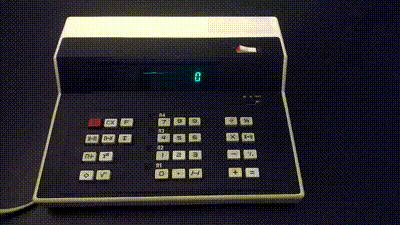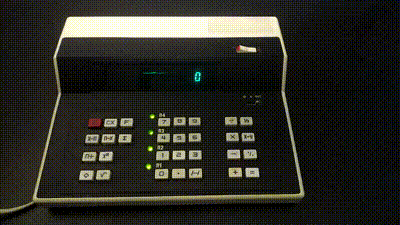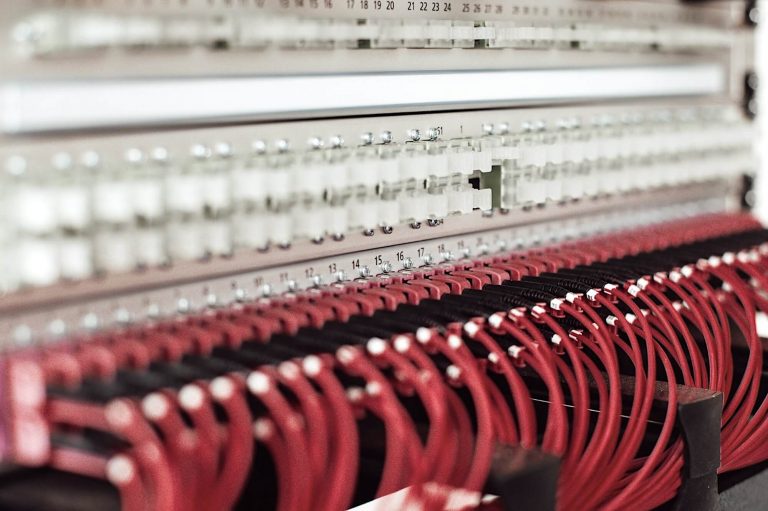“ELEKON-MK” – two faces of the Soviet-Russian microcalculator

Of course, Lucius Annaeus Seneca did not have any calculating devices in mind at all in his phrase, better known in short form as “live and learn.” But it was precisely this statement that I remembered before the idea of writing this article, when I realized that I had again discovered something new in the history of calculators.
It all started with the usual newsletter of new products from one well-known platform for private advertisements.

The experienced eye of a fan of such devices will immediately determine – this is the usual (in the sense of well-known) MK-56, a second-generation programmable calculator, a desktop version of the MK-54. Why then “Elekon MK”? Here's the ad itself.

Well, yes, according to the description – MK-56. I was sincerely pleased about the privacy of payments! Let's look at the photo.

No, this is not MK-56. But similar. This is really someone Elekon-MK! It is also on the website of the famous collector Sergei Frolov, but there is not much information, apparently at the time I did not pay attention to the details, scrolled past it, and did not stick in my memory. But it becomes clear that the calculator is unusual.
Without entering into correspondence with the seller on the subject of “don’t be misleading,” I decided to buy the lot. I think that the seller did not make a mistake on purpose. And no wonder. If you do not take into account the inscriptions and the color of the buttons, this is the same design as the MK-56. In addition, on one specialized website electronica-5.ru there is, among other things, a useful table with a list of companies and what models they produced. We find the famous Elekon plant, which produced desktop programmable calculators, and see – Elekon-MK – a clone of the MK-56!

Apparently, I thought, there was a mistake on the website too. However, on the “Latest MK” page of the same site it is presented – Elekon-MK in the role of MK-56.

No other information was found. It became clear that there are two different devices with the same name, hence the confusion.
In the meantime, the package arrived and the opportunity arose to explore this miracle.
Of course, the first thing that catches your eye is the body, indication, buttons and their number, switch and switch – this is the reincarnation of the MK-56.

With the exception of two points – LED indicators (4 pieces) and an output at the end of the IRPR(M) interface appeared.

But the hardware is completely different, look at the instructions:

This is understandable, the calculator is dated September 1993 – the time of the boom in the availability of microcontrollers and processors, and its older relative MK-56 was published 10-12 years earlier.
Judging by the designations of most of the buttons, which are immediately understandable, we see that this is, in general, a simple calculator with the addition of the functions square, root, reciprocal and calculations with percentages. There is work with memory. But there are also incomprehensible designations.
For what purposes did the manufacturer develop it?

That is, the calculator is positioned as a financial one. This type included the MK-44, produced in 1981. Let's see what additional “financial” opportunities Elecon-MK has and at the same time compare them with the capabilities of MK-44. And what is the LED indication for?

The Elecon-MK indicator is 12-digit, the least significant digit is filled from the far right. In addition to the “red” reset “C” (resetting the working registers X and Y, operations and error signs), there is a reset “CX” – erasing the last entered digit (if there is some key bouncing, a very useful function). When pressed again, register X is reset.
There is a button and switch for printing.

To be honest, from the description I couldn’t understand the whole idea of the developers, only the third point, and without a printer the button and slider do nothing.
Operations with percentages do not require pressing “=” (as in MK-44). The operation of the working registers is typical when calculating arithmetic, as shown in the diagram.

There is a rare function for the simplest calculators “XY” for exchanging operands (a number in a register) between working registers, sometimes this is useful. By the way, the MK-44 also has this function.
The prefix button F, together with the number from 0 to 9, determines the form of representation of the number output – how many fixed characters after the decimal point, and together with the “comma” the natural representation is returned. Interestingly, if an overflow occurs in the current representation and it is possible to increase the whole part, the error signal will disappear and the result will be displayed. In MK-44 there is a presentation switch for two or four decimal places or in natural form.

Entering numbers is not entirely standard: after the arithmetic operation key, the operand from X is not yet copied to Y, but only when the digits of the next number are pressed. And if, for example, before entering the second operand, you press the exchange button “XY” twice, the copying will not happen, the new number will overwrite the one in X, and the “equal” or new action will end the operation with the new X and the “old” Y. Typical is , like the MK-44, when any action button immediately copies the operand from X to Y.
But Elekon-MK has as many as 7 additional memory registers. In addition to writing and calling a number, there is a function for adding X with the selected register. The specified operations are addressable, i.e. are set by a pair of keys – an operation button and a register number button from 1 to 7. I note that the MK-44 has three registers, but for the first and second there are more functions – in addition there is subtraction and zeroing (reset), with functions P+, P- and reset are nominal (separate buttons), and writing and reading are addressable.
And finally, the main feature of Elecon-MK is the similarity of statistical functions. To do this, the first four memory registers have additional capabilities – they carry out accumulations (adding to themselves) according to the following rules (extract from the instructions):
– register 1 accumulates only the first number typed after the “C” or “=” or “%” keys;
– register 2 accumulates only the second number typed after the “C” or “=” or “%” keys;
– register 3 accumulates only the result of the operation by pressing the “=” key;
– register 4 accumulates the number of presses of the “=” key;
To switch the register to accumulation mode, you must press the prefix key “sum sign” and a number from 1 to 4. The corresponding LED indicator will light up. Pressing the key combinations again disables the accumulation mode and turns off the indicator; the registers are not erased.

Below are examples of calculations and the results of accumulations in registers (P1-P4). In the first case, the summation was “3+4=+5=+6=+7=”, in the second the product. Test addition of numbers in columns corresponds to values in registers.


The function is interesting, but, frankly, I don’t know if it has any practical application. The MK-44 also has auto-accumulation; register 3 is used for this. When the special switch is moved to the appropriate position, register 3 adds the result value after pressing the “=” key, i.e., like register 3 of the Elekon-MK.
Let's summarize. From a practical point of view, interest in the device at the time of its appearance could have been minimal. In 1993, PCs were already appearing everywhere; counting on a desktop calculator, much less typing something, would hardly have become a mass undertaking. He also appeared taking into account those difficult times. The history of the ELEKON Plant shows that in the early 90s the company lost orders, it was necessary to retrain to produce new goods. The desktop programmable MK-56, produced before this (until 1991), completely lost its relevance, and, most likely, its elemental base became unavailable. Apparently there was a proposal to create a new calculator, with a modern element base and new capabilities. But to reduce the cost in an old building. This is evidenced by the degree-radian-degree switch left over from the MK-56, which should now determine the type of print, the functionality and purpose of which is not clear, “far-fetched”, this is clearly a forced measure (do not leave a gap on the body or a patch). The microprocessor made it easy to implement new solutions – various accumulation functions in registers, light indication, external interface, but at the same time complicated the development and debugging of embedded software. For example, there is an interesting bug: when entering a number from Y into the X register with a number of digits of the integer part greater than 9, it gives an error (example: enter such a number, for example 1234567890 and press the exchange button “XY” twice).

But today, from a cultural point of view, Elekon-MK is interesting, even original. Development of a completely different calculator in an old building – are there any other examples like this? (Remember the souvenir loudspeaker of the first radio channel in the B3-34 case? Well, it’s a radio, but here is a “single-chip micro-computer”!) And the light indication, in my opinion, is simply unique (not counting the early large calculators of the early 70s ).
In general, I was pleased (what’s his name, Lucius Annaeus Seneca), thank you!
Video version of the article:





